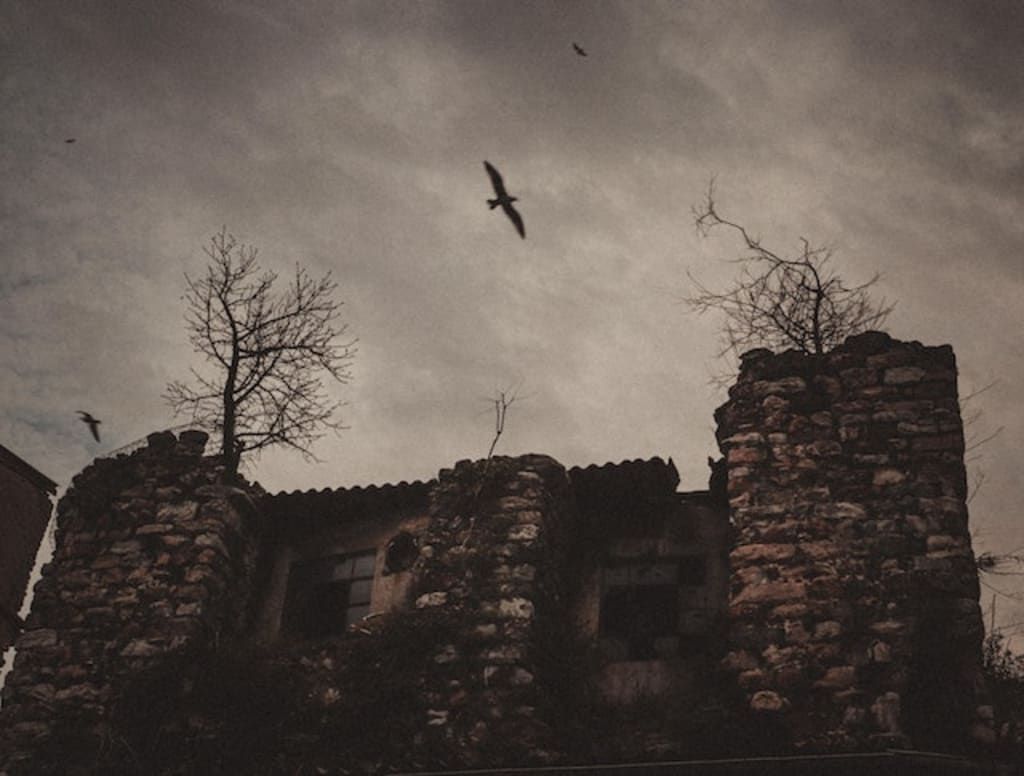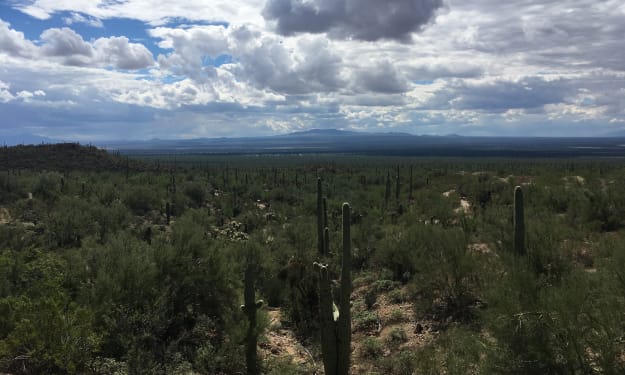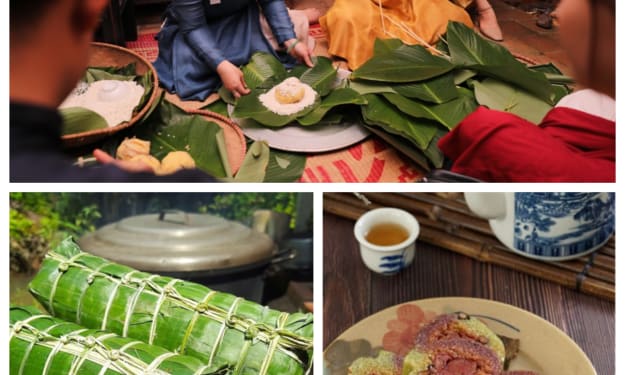10 Haunted Places to Visit in Scotland This Halloween
The most wonderful time of the year to seek out spooky thrills

If I've said it once, I've said it a hundred times; I love Halloween. It makes my little pagan heart happy to see the roots of older traditions peeking out from behind the modern rigmarole. From carving pumpkins (or turnips if you're a traditionalist) to dressing up, its a season with it's own charm... and there's no better time to explore some of the spookier places in the world!
As a native Scot, I feel like I'm surrounded by tales of ghosts and ghoulies in the old buildings all around me. It's strange to think about because, in truth, Scotland isn't that old in a the grand scheme of the world but I always think it feels old. The land itself is old, though. The rock and earth here is some of the oldest on the planet, older than Saturn's rings apparently. Once a part of what is now the Appalachian mountain range, the tiny island we're on broke away hundreds of millions of years ago to stand alone, and it's become worn down and weary over time.
With that in mind, maybe it makes sense that so many of our cities are said to have heavily haunted locations. Whether you're a local or a tourist, these are my top ten recommendations for haunted haunts to visit this spooky season.
Glencoe, Argyll
Visited by hundreds of thousands of people every year for its stunning landscape and views, this gorgeous place is also the site of the Glencoe Massacre which led to its nickname 'The Glen of Weeping'.
In 1692 the resident MacDonald Clan were murdered as they slept by the troops of Clan Campbell on the orders of the King. 38 men, women, and children were killed, some being slaughtered while others escaped into the hills only to die of exposure in the freezing night.
There was, and is, a strong culture of hospitality in the highlands, and it is this that marks out the massacre as particularly abhorrent. The members of Clan MacDonald were sheltering the government troops on the night of the massacre. They had fed them, drank with them, and provided beds for the night only to have their guests turn on them in the early hours of the night.
There are hundreds of tales of hauntings in this location, from the sound of weeping or screaming being heard in the night to the sight of bloody figures being spotted in the hills around the anniversary of the battle. Whether you see ghosts or not, the Glencoe village and visitor centre are worth visiting.
Stirling Castle, Stirlingshire
Stirling has often been referred to as the 'brooch' that holds the highlands and lowlands of Scotland together. Commanding an important location at the fording point of the Forth river, Stirling Castle has been at the centre of some of the most pivotal moments in Scottish history.
Given its illustrious, and often bloody, history it's not surprising that Stirling Castle has a host of ghosts to talk about. The most notable are The Highland Ghost and The Green Lady.
The Highland Ghost is a male figure decked out in traditional garb; tourists report seeing him, mistaking him for a tour guide, and being astonished when he disappears on approach.
The Green Lady is a little more elusive. Believed to have been a servant to Mary Queen of Scots (whose ghost is also said to haunt the grounds), she wanders the halls as if still going about her business.
Dryburgh Abbey, Scottish Borders
Now on the grounds of a hotel, Dryburgh Abbey was founded in 1150 by the Lord of Lauderdale and was home to a Roman Catholic monastic order. Today the building is rubble, but the hotel is said to be built on the site of a building that stood during the Abbeys active years.
The ghost of this place is said to be that of a young woman who lived in the building that stood where the hotel is now. She entered a love affair with a monk, and when the monks peers discovered he had broken his vows they demanded he be executed. The woman drowned herself in the Tweed river after learning of her lovers death; her ghost, The Grey Lady, now wanders the grounds seeking her lover.
Some guests have also reported coming across a group of spectral monks chanting; could these be the men responsible for the execution of The Grey Ladys lover?
Duntrune Castle, Argyll
Found on the north shore of Loch Crinan, Duntrune Castle is supposedly one of the longest continually inhabited castles in the country. Gorgeous to look at, this relatively small castle has a resident ghost; a spectral bagpiper.
The story of this piper is strange. Apparently he was an Irish spy answering to a man named Coll Ciotach; he was sent to gather information about Clan Campbells defences as the story goes, and was discovered. The clan members locked him in the castle tower and he began to play the pipes in an attempt to warn Ciotach.
Members of Clan Campbell cut off his finger as punishment; whether he died of infection or bled to death as the story says will probably never be known for sure, but visitors report hearing ghostly pipes playing in quiet moments.
The Ghost Road, Dumfriesshire
A strange entry, but one worth considering for those taking a road trip in Scotland. In Dumfresshire there is an innocuous stretch of road along the A75 that is said to be haunted. By night people have reported seeing a ghostly horse and carriage with no driver as well as hearing the screams of banshee, seeing the silhouette of baobhan síth (pronouned ba-van-shee, but not be confused with the Irish banshee), and coming across other folkloric beasties such as cu síth.
A word to the wise; if you see something on this road... no you didn't. Stay in your car; most the folkloric beasts of Scotland are not known for being friendly towards errant humans.
Westbow House of Horrors, Edinburgh
Have you heard of the Bowhead Saint? A strange figure from Scotland's more recent past, Thomas Weir was a descendant of one of the most powerful and ancient families of Lanarkshire the Weir-de Veres. Through his life he was a staunch man of faith, a Covenanter, and an officer in the Scottish Anti-Royalist Army. After retiring, he became a lay preacher.
So, how did the Bowhead Saint's home come to be known as a 'house of horrors'? Witchcraft.
Oh yes, ladies and gentleman, we've touched on a topic that I could rave about for hours; I did my masters thesis on Scottish witchcraft trials... but I won't deluge you with details. Let's cut to the chase; Weir's mother was reported to be clairvoyant, and at the end of his life he lived with his sister Jean 'Grizel' Weir. He fell ill in 1670 and from his sickbed confessed a life of vice and sin that lead to he and his sister being arrested and interrogated. Their crimes were found to be witchcraft (or sorcery in Thomas's case), bestiality, and incest. They were sentenced to death.
Their house lay empty for years and came to be regarded as one of the most haunted in the city; an elderly couplpe bought it in the 1700s and were reported to leave it after just one night. The house itself was supposedly demolished, but is believed to have been incorporated into another building - the Quaker Meeting house. Staff in this house have reported seeing a tall, elderly man walking its halls, stick in hand, searching for something. Could it be the Bowhead Saint?
Glamis Castle, Angus
As the ancestral home of the Bowes-Lyons family since 1372, Glamis Castle has a long, colourful, and often bloody history. Awarded to the family by Robert the Bruce, this place is one of the most haunted in Scotland. It is also the birthplace of the late Queen Mother and the Princess Margaret.
Another Grey Lady haunts this place; the ghost of Lady Janet Douglas. Lady Janet was sentenced to death after making a bogus claim that she was conspiring to poison King James V and was burned at the stake outside Edinburgh Castle in 1537. Her ghost has been seen wandering the halls of the castle as well as its grounds, seemingly unaware of any people around her. Perhaps she's seeking the peace of her home after such a traumatic death.
Culloden Moor, Inverness
The battle of Culloden remains one of the most vicious and iconic battles in Scottish history. The penultimate battle of the Jacobite rebellion which resulted in the slaughter of the rebel army has been immortalized many times over, perhaps most iconically in The Skye Boat Song
"Many's the lad, fought on that day
Well the claymore did wield;
When the night came, silently lay
Dead on Culloden's field."
The emotion is clear in these lines. Don't start me on the butchery of this song, or the inherent 'self-insert, magic girl saviour complex' nature of the entirety of Outlander - I'll never shut up... if I can indulge in a small rant, however, the fact that searching for this song immediately routes you to the Outlander version rankles me.
Unsurprisingly, given the bloody history of this place and the way the Jacobite rebellion tore apart the bonds of brotherhood its no surprise that the site is said to be haunted. The sounds of gunfire, fighting, and ringing swords are said to be heard on the wind from time to time, and the spectres of bloodied, forlorn highland soldiers have been spotted wandering the site.
Edinburgh Vaults, Edinburgh
The vaults that run under Edinburgh are creepy, there's no doubting that; if you are at all claustrophobic you will find a visit highly unpleasant. However, they also reported to be one of the most haunted places in an hugely haunted city.
Formed in 1785 as a part of the South Bridge Act, the vaults were used to facilitate the expansion of the city. For the first 30 years of their life, they housed taverns and workshops for tradesmen such as cobblers. However, conditions began to deteriorate and became a hub for homelessness, criminality, and even corpse storage for some of the cities infamous body snatchers such as Burke and Hare.
There are few written records surrounding the vaults, and so we're not sure precisely when they were shut down, but they were rediscovered in the 1980s whereon a modern witches coven set up shop in their hidden spaces. Visitors speak of 'shadow men', vicious poltergeist activity, and an ominous presence. There is also room where, on excavation, lightbulbs installed to facilitate the vaults use as a tourist attraction would explode; now this room lies in a state of darkness, lit only by torches and lanterns carried by visitors.
Dunstaffnage Castle, Oban
Oban is a pretty underrated town in my opinion; most of the locals I know love to go there for a daytrip but proportionally fewer tourists seem to go out that way. It's a pretty town, of course, but in spooky season the main attraction is not the stunning views or quaint shops but the haunted castle of Dinstaffnage.
Built around 1220 at the height of the struggle between Scotland and Norway (centred around control of the Hebrides), it's an old building that has been visited by iconic figures like Robert the Bruce and James IV.
So, it's no surprise that many claim that it is haunted. By what? A lady in green (a common ghost type in Scotland) who wanders the halls and grounds. It is said that historic owners of the land Clan Campbell know what their fortunes will be based on sightings of her. If she is smiling, fortune is ahead, but when weeping she signifies danger, grief, and trouble.
About the Creator
S. A. Crawford
Writer, reader, life-long student - being brave and finally taking the plunge by publishing some articles and fiction pieces.
Enjoyed the story? Support the Creator.
Subscribe for free to receive all their stories in your feed. You could also pledge your support or give them a one-off tip, letting them know you appreciate their work.
Reader insights
Outstanding
Excellent work. Looking forward to reading more!
Top insights
Excellent storytelling
Original narrative & well developed characters
Masterful proofreading
Zero grammar & spelling mistakes
On-point and relevant
Writing reflected the title & theme
Expert insights and opinions
Arguments were carefully researched and presented
Easy to read and follow
Well-structured & engaging content
Eye opening
Niche topic & fresh perspectives
Compelling and original writing
Creative use of language & vocab
Heartfelt and relatable
The story invoked strong personal emotions







Comments (8)
Sounds like a really good tour - I aint 'fraid of no of ghosts; it's the living that scare me!
This is so well written and fascinating. I did know that Halloween originated in Scotland, as it is my favorite day of the year. I didn’t know anything else written here. I was particularly shocked that Scotland used to be part of the Appalachian region. I would actually love to read more from you about the Scottish witch trials. Those vaults sound spooky AF!
Brilliantly written and so many wonderfully freaky places to visit! Definitely made me what to stop by! Thank you for sharing! 🤍
I've been to Glencoe, but I didn't get a chance to go to the Edinburgh Vaults when I was there. I did get a chance to do Mary King's Close, however.
These are going on my Bucket List! Very intriguing. Thank you!
This was right up my alley! Thank you for the tour! Scotland is one of my top "one day" visit destinations.
This was a great read! I love stories of folklore and hauntings.
Cool beans, Crawford. Love spooky season :)